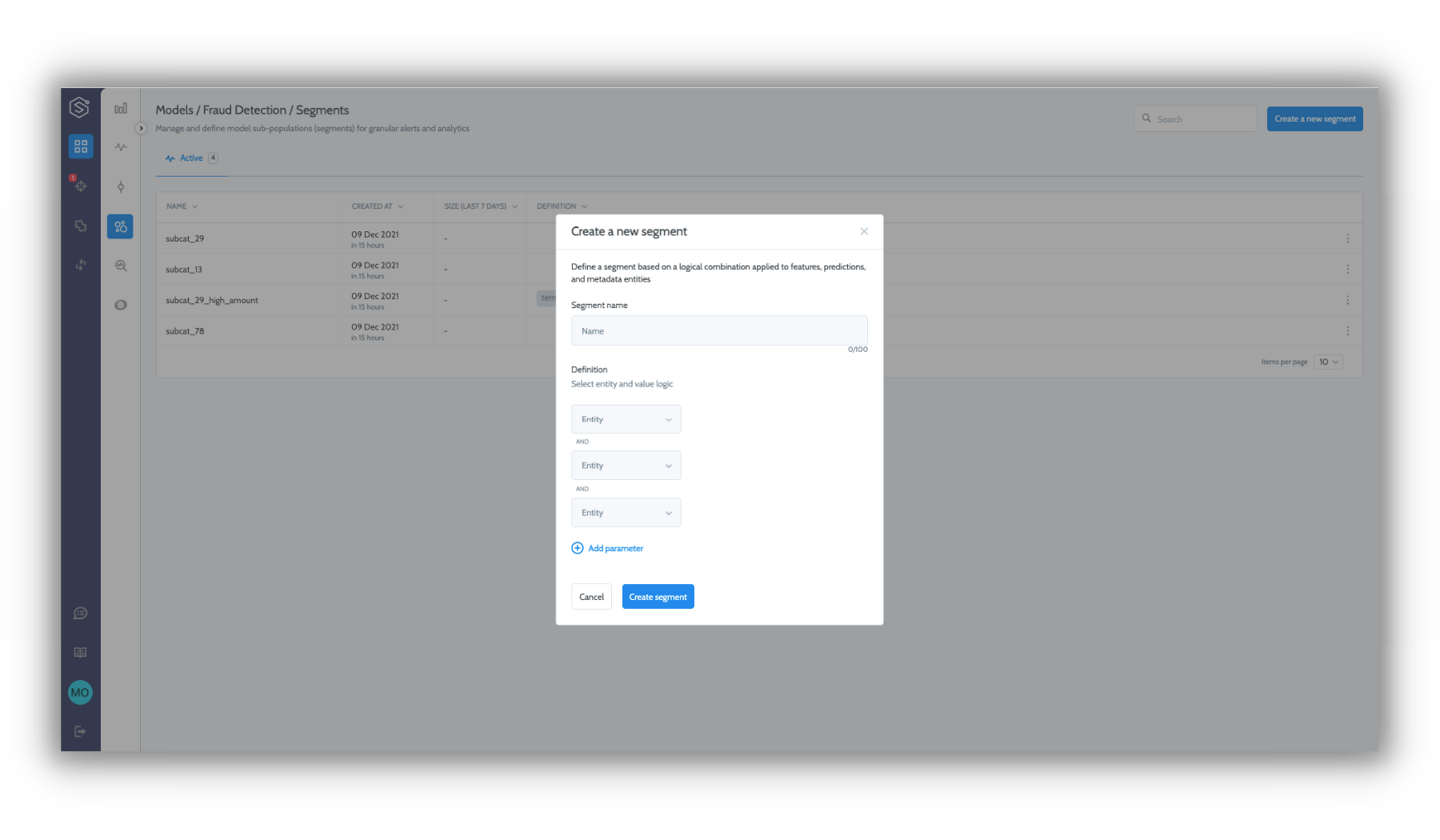Segments
"You talking to me?"
-Taxi Driver
While your model serves different predictions and tries to generalize between them, you usually want to track and explore specific subgroups of your data, according to a filter on one (or more) features. Either because of particular business focus on those segments or behavioral divergences distinct to subgroups.
Examining your data using various data segments might change your perspective, and lead to new insights.
For instance, Segments allow you to analyze input drift for a specific sub-population, for example, a country, or to monitor model performance only for people below the age of 30 and above a certain income level.
With segments, you can easily filter your data based on conditions and observe population subsets to which a model applies so you can refine and monitor your model.
The segment definition can use any one of the data entities defined in your version schema, except entities in the following roles: ID, Timestamp, Label, and Label weight.
The definition itself can be based on a single entity condition or a multi-entity condition. For example:
Segment 1 definition:
Age >= 50
Segment 2 definition:
Age >= 50 AND
Payment_type Exclude 'Paypal' AND
Martial_status Include 'Married'

Updated over 3 years ago
